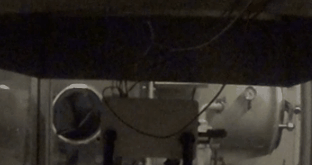
Battery
FIRES
Recent news stories have highlighted the fire and explosion hazards posed by electronic devices powered by Lithium-ion batteries. The fire hazard is associated with electrolyte ignition and self-heating chemical reactions due to thermal instability of the battery materials. Some areas of our research include understanding the combustion kinetics, enthalpies of combustion, ignition and fire evolution. The overall goal is to develop and evaluate mitigation strategies to minimize negative impacts of battery thermal failures through computational modeling and experimental testing.


As the size and scale of a battery system increases, an increasing reliance on models is required. At the cell level, a variety of cell failure testing is commonly used to characterize cell failure and thermal runaway. At the site level, models are useful in predicting the effects of thermal runway of a battery system on the infrastructure


In typical oven tests, cells are exposed to convective heating and thermal runaway is observed. Here, a lumped thermal model is used to predict thermal runaway of cells in oven tests. The internal cell reactions are assumed to follow nonlinear Arrhenius kinetics. The model correctly predicts the critical oven temperature for thermal runaway to occur.
Project:
LI-ION
BATTERY
THERMAL
RUNAWAY
Researchers: Serhat Bilyaz, Tyler Buffington, Robert Kennedy
Understanding thermal runaway characteristics of li-ion batteries is critical in determining their behavior in failure scenarios. The purpose of this project is to relate and scale up properties and characteristics of thermal runaway at the individual cell level to modules and packs that may contain several cells (i.e., power tool packs, laptops) or thousands of cells (i.e., electric vehicles, energy storage systems). For large battery systems that can contain upwards of several thousands of cells, an approch centered around experimental testing only my not be practical for investigating a wide range of failure conditions. Our goal is to develop a framework where cell-level thermal runaway characteristics determined from small-scale experimental tests can be use to infer or predict behavior of battery systems that contain multiple cells through a combination of computational models, analytical models and validation experiments.


Project:
EFFECT of FLAME
RETARDANTS
on BATTERY-
POWERED ELECTRONICS
Researcher: Celia Kelly
As larger, more energetic batteries are being introduced into the consumer market, the risk of battery fires is becoming more serious. Although advances in lithium-ion batteries have reduced the failure rates of cells, battery fires, thermal failures still continue to occur due to a wide range of causes from manufacturing defects to end product design flaws. Traditionally, for many flammable materials such as plastics and textiles, flame retardants are used to reduce and mitigate the fire hazard. However, compared to other common ignitions sources, a lithium-ion battery has the potential to release significantly more energy. The scope of this research project is to characterize the performance of flame retardants in battery-powered consumer electronics under battery thermal failure conditions.

High-speed video taken at 240 fps of a thermal failure of an 800 mAh lithium-ion pouch cell contained in a 3-D printed ABS enclosure showing the ignition and violent flaming of ejected gases and subsequent ignition of the ABS enclosure. Video playback is slowed by 5x.


Non-flame retardant (NFR) and flame retardant (FR) enclosures were printed and tested. Both NFR and FR enclosures ignited. However, the NFR enclosure completely burned (top), whereas the FR enclosure self-extinguished due to the presence of flame retardants (bottom).

CT reconstruction of a lithium-ion cell that had undergone a thermal failure. CT imaging shows the thermal failure was likely initiated by physical damage to the cell by external force.






Time sequence of a 2000 mAh lithium-ion pouch cell overcharge failure (top). The cell was overcharged at a 2C rate until thermal runaway was initiated. In the case above, overcharging caused lithium metal to plate or accumulate on the anode surface, which caused a short circuit to develop between the positive and negative electrodes. As the internal cell temperature increased, gas generated in the cell caused the cell to swell and ultimately the soft polymer case failed resulting in an ejection of flammable gases. These gases then ignited and resulted in a fire. Images of an unwrapped 800 mAh lithium-ion pouch cell with a shutdown separator after applying a 4C overcharge (bottom). In this case, the shut down separator prevented the cell from undergoing a thermal runaway. The images show the anode before (bottom, left) and after (bottom, right) exposure to air. In the presence of oxygen, lithium metal oxidizes forming a white metal oxide on the surface of the anode.
Project:
LITHIUM-ION BATTERY
FAILURE
ANALYSIS and
FIRE RISK
Researcher: Erik Archibald, Anne Jillian Monsanto
Lithium-ion batteries can fail due to many different reasons, and in some cases can result in a fire or explosion. Determining the cause of failures that do result in fires is critical in mitigating fire risks and developing safer lithium-ion battery products. Whether a failure scenario results in a fire not only depends on the design of the battery, but also the use profile of the battery-powered product. Use factors such as battery age and the use of counterfeit or unapproved third-party batteries can affect the fire risk of a product. The scope of this research project is to develop the battery failure analysis methods and using these methods quantify the effect of various use factors on battery fire risk.
